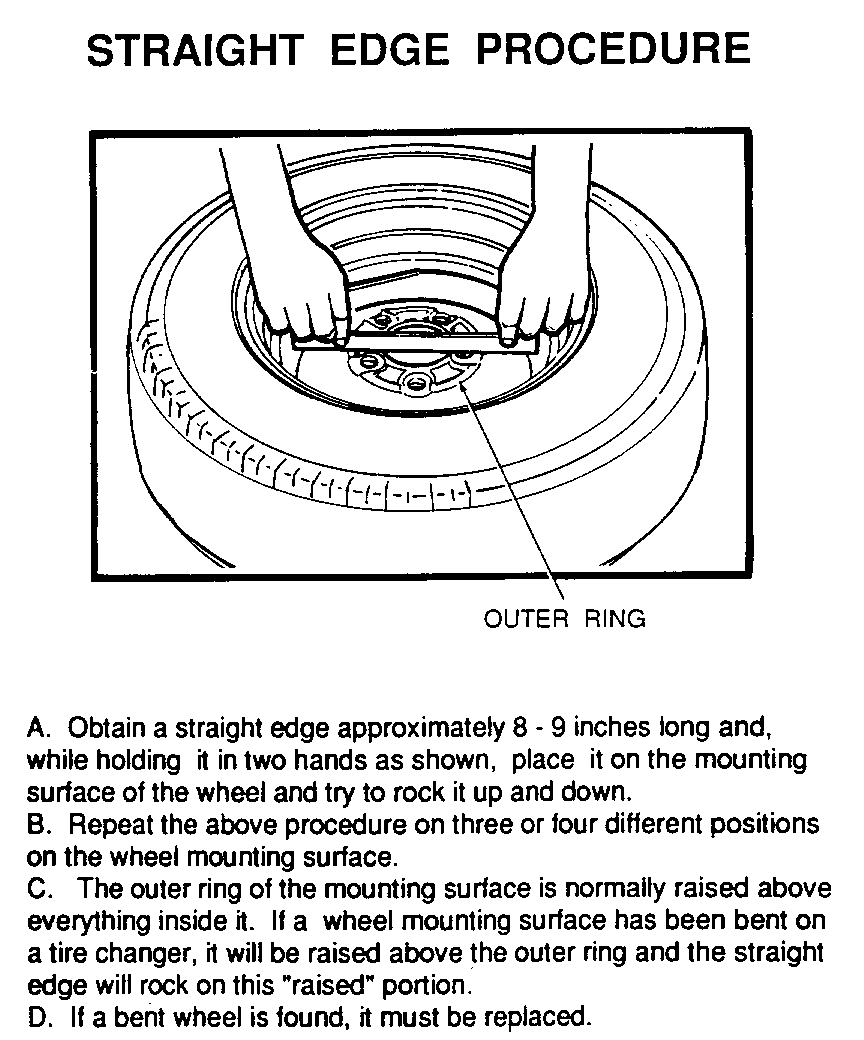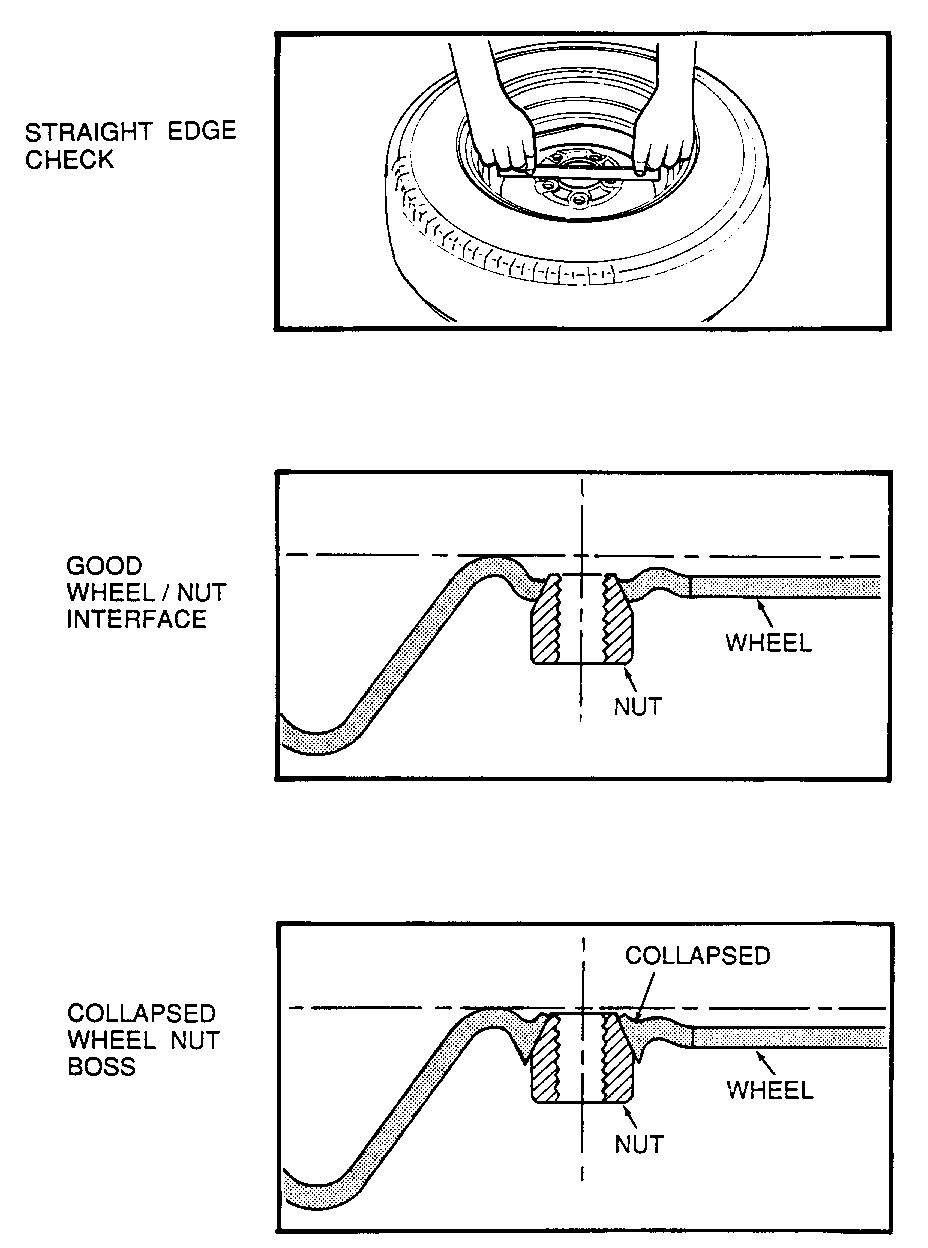SERVICE GUILD: INFO ON AVOID DAMAGE TO TIRE WHEELS

SUBJECT: INFORMATION ON AVOIDING DAMAGE TO STEEL WHEELS FROM IMPROPER WHEEL/TIRE CHANGING TECHNIQUES
VEHICLES AFFECTED: 1983-1992 ALL CARS AND TRUCKS
It is important to note that damage to either the tire mounting surface or the wheel mounting holes can result from the use of improper wheel attachment or tire mounting techniques on vehicles with steel wheels.
1. IMPROPER TIRE CHANGING TECHNIQUES:
It takes about 70 seconds for the air to completely exhaust from a large tire. If the technician doesn't wait this amount of time after removing the valve core, the bead breaker on the tire change could put enough force on the tire to bend the wheel at the mounting surface. Such damage can result in vibration, shimmy, and under severe usage (i.e. police vehicle) lead to cracking.
2. OVER TORQUING OF THE WHEEL NUTS:
The service specification for wheel nuts is listed in the Service Manuals. Some wheels have been observed with wheel nuts that were over torqued by as much as 50 percent. This may damage the wheel mounting holes and may also lead to cracks.
I. PROPER TIRE CHANGING TECHNIQUES: ----------------------------------- Completely deflate the tire before attempting to break the tire bead loose.
MOUNTING SURFACE CHECKING PROCEDURE
A. Obtain a straight edge approximately 20-23 cm (8-9 inches) long and, while holding it in two hands, as shown in the attached illustration, place it on the inboard mounting surface of the wheel and try to rock it up and down.
B. Repeat the above procedure on three or four different positions on the wheel inboard mounting surface.
C. The outer ring of the mounting surface is normally raised above everything inside it. If a wheel mounting surface has been bent on a tire changer, it will be raised above the outer ring and the straight edge will rock on this "raised" portion.
D. If a bent wheel is found, it must be replaced.
II. OVER TORQUING OF WHEEL NUTS: --------------------------------
1. A TORQUE WRENCH MUST BE USED to insure that the wheel nuts are tightened to specification. This should be done in two steps using the star pattern. First, snug the nuts down by hand. Then, using the star pattern and a torque wrench, tighten the wheel nuts to about half the final torque. Finally, tighten the. wheel nuts to specification using the star pattern and a torque wrench.
2. NEVER use lubricants or penetrating fluids on wheel studs, nuts, or mounting surfaces, as this can raise the actual torque on the nut without a corresponding torque reading on the wrench. Wheel nuts, studs, and mounting surfaces must be clean and dry.



General Motors bulletins are intended for use by professional technicians, not a "do-it-yourselfer". They are written to inform those technicians of conditions that may occur on some vehicles, or to provide information that could assist in the proper service of a vehicle. Properly trained technicians have the equipment, tools, safety instructions and know-how to do a job properly and safely. If a condition is described, do not assume that the bulletin applies to your vehicle, or that your vehicle will have that condition. See a General Motors dealer servicing your brand of General Motors vehicle for information on whether your vehicle may benefit from the information.
